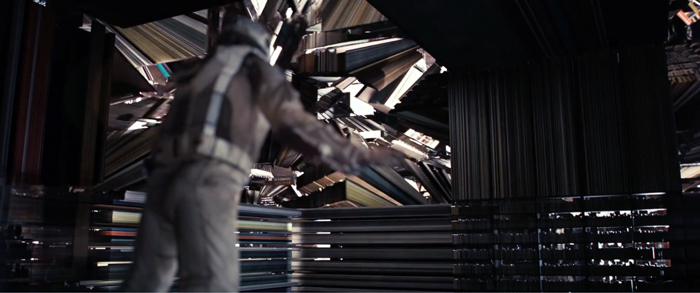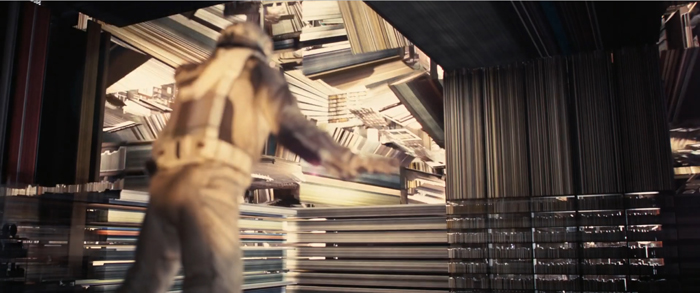Archive for December 2018
Christopher Nolan: Back into the labyrinth
Interstellar (2014).
DB here:
A new edition of our e-book Christopher Nolan: A Labyrinth of Linkages has just gone into production at the hands of our web tsarina Meg Hamel. It updates our discussion of Nolan’s career by including a brand-new chapter on Interstellar and one on Dunkirk that revises and expands our blog entries on the film (here and here).
The book also includes a new chapter surveying Nolan’s approach to filmic storytelling, along with more links and frame enlargements. I wrote the bulk of this second edition, with Kristin contributing portions on exposition in Inception and Dunkirk.
As in the first edition, I try to respond to the objections that some viewers have about Nolan’s work. I grant some problems with his films, chiefly at the level of visual style. But I also try to make a case that Nolan has been exploring film narrative in ways that are significant for film history. I argue that his achievement contributes to storytelling trends of his moment (from the 1990s on) and in art and literature more generally. His work is shaped by what I call a “formal project,” akin to that we find in Alain Resnais and Hong Sangsoo.
Nolan’s detractors are likely to counter that those directors are better than Nolan. But they work in different circumstances. In the context of mass-audience Hollywood cinema, I think Nolan’s work repays scrutiny.
I’m mostly offering analysis, not evaluation. I have to admit, though, that in reworking the book and rewatching the films, I’ve come to extend my admiration for certain projects (The Prestige, Dunkirk) to others, especially Interstellar. Still, even if you don’t share my regard for the films, I think that it’s worth discussing what Nolan’s accomplishment shows about trends in modern cinema and the broader possibilities of filmic storytelling.
Which is to say, yet again, that Christopher Nolan: A Labyrinth of Linkages 2.0 is primarily a venture in film poetics.
We hope to make the new edition available this month or in January. It would be priced higher than the current edition, at $3.99 (i.e., the cost of a Tall Caramel Frappucino). This pays for a new design for the book, one exploiting the horizontal format for widescreen frame enlargements. We won’t be embedding video extracts in the text, as we did last time, but we may set up the clips as online links.
To the hundreds of you who bought copies over the years, thank you. We appreciate your support, and we hope that the new edition will also be worth the attention of the readers who visit this site.
Just to be clear, we’ve also welcomed the narrative explorations of Resnais and Hong Sangsoo on our website, and in our research more generally.
Interstellar (2o14).















